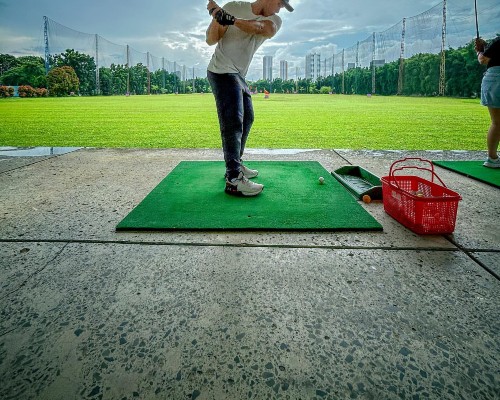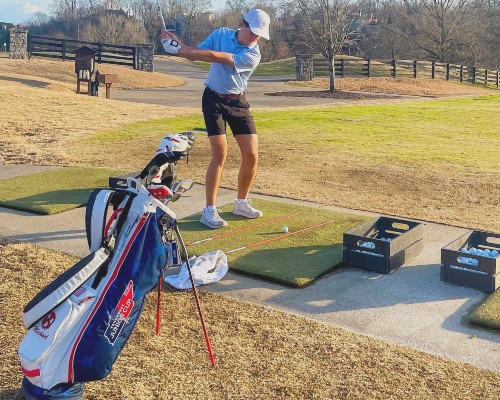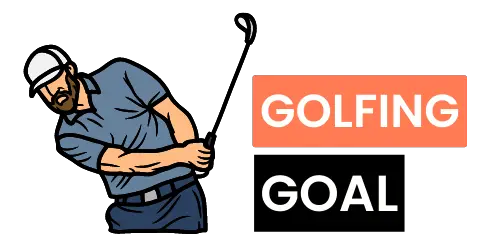
At the driving range, the dress code is often relaxed. Golfers can wear almost anything.
However, some golfers wonder if wearing golf shoes at the range offers any real benefits. The answer is yes. Golf shoes provide better traction and stability, helping you improve your swing.
Let’s dive into why they could be your best choice for the driving range.
Benefits of Wearing Golf Shoes at the Driving Range
1. Enhanced Grip and Stability
Golf shoes offer superior grip. They prevent slipping during swings. This stability improves shot accuracy.
2. Consistency in Practice
Using golf shoes at the range mimics on-course conditions. This helps maintain consistency. Practicing in the same shoes enhances muscle memory.
3. Improved Swing Mechanics
Better traction allows for smoother swings. This reduces the risk of injury. It also helps in achieving better ball contact.
4. Durability of Golf Shoes
Wearing golf shoes only for golf preserves their quality. Regular shoes wear out faster on grass or mats. Golf shoes are designed for these surfaces.
5. Better Foot Support
Golf shoes provide excellent arch support. This reduces foot fatigue. This is especially important during long practice sessions.
6. Suitable for Various Surfaces
Spikeless golf shoes are versatile. They can be used on both mats and grass. Metal spikes are ideal for grass. Learn how to avoid common golf outfit mistakes here.
Types of Golf Shoes Suitable for the Driving Range

Spiked vs. Spikeless Golf Shoes
| Feature | Spiked Golf Shoes | Spikeless Golf Shoes |
|---|---|---|
| Traction | Excellent grip, especially on wet grass. | Good traction, suitable for both grass and mats. |
| Comfort | May be less comfortable on hard surfaces. | Generally more comfortable, similar to regular sneakers. |
| Surface Suitability | Ideal for grass surfaces. Not recommended for mats. | Versatile, can be used on grass and mats. |
| Durability | Spikes wear out, need replacement. | Longer-lasting soles, no need for spike replacement. |
| Cost | Often more expensive due to spike technology. | Generally more affordable and versatile. |
| Weight | Heavier due to spikes. | Lighter, easier to walk long distances. |
Alternative Footwear Options for the Driving Range
1. Athletic Shoes
Suitable for casual practice. Offer decent grip and comfort. Not as effective as golf shoes. Good for beginners or occasional players.
2. Running Shoes
Provide cushioning and support. Better than regular sneakers. Lack the specific traction of golf shoes. Ideal for those without golf-specific footwear.
3. Tennis Shoes
Good lateral support. Suitable for movements similar to golf swings. Provide better grip than casual sneakers. Not as durable on grass surfaces.
4. Cross Trainers
Designed for various activities. Offer support and flexibility. Better grip than casual sneakers. Not ideal for wet conditions. Versatile for different exercises.
5. Basketball Shoes
Provide good ankle support. Suitable for hard surfaces like mats. Lack the necessary traction for grass. Best for indoor driving ranges.
6. Hiking Boots
Offer excellent grip and support. Not common for driving ranges. Suitable for rough terrain practice. Heavy and less comfortable for prolonged use.
Footwear to Avoid at the Driving Range

1. Sandals and Flip-Flops
Lack necessary support and grip. Can cause slipping and injury. Unsuitable for golf swings. Provide no protection to feet.
2. High Heels
Highly unstable and unsafe. Impossible to maintain proper balance. No traction for golf swings. Risk of ankle injuries.
3. Dress Shoes
Not designed for sports activities. Lack grip and flexibility. Can damage the range surface. Unsuitable for repeated swings.
4. Cleats
Can damage mats and grass. Provide too much grip, causing strain. Designed for other sports, not golf. Risk of injury during swings.
5. Work Boots
Heavy and inflexible. Not designed for golf movements. Lack the necessary grip for swings. Can cause foot fatigue and discomfort.
6. Barefoot
Offers no protection or grip. Risk of injury from debris. Lack of stability for proper swings. Unhygienic and unsafe on public ranges.
Practical Tips for Choosing Driving Range Footwear

1. Consider Surface Type
Grass surfaces require more grip. Use spiked shoes for better traction. For mats, spikeless shoes work best. They prevent damage and offer comfort.
2. Prioritize Comfort
Choose shoes with good cushioning. Comfortable shoes prevent foot fatigue. Essential for long practice sessions. Look for shoes with arch support.
3. Evaluate Durability
Shoes should withstand frequent use. Golf shoes are more durable on grass and mats. Athletic shoes may wear out faster. Check for wear-resistant materials.
4. Weather Conditions
Consider weather when choosing footwear. Waterproof shoes are best for wet conditions. Breathable shoes work well in hot weather. Ensures comfort and safety.
5. Foot Support and Stability
Ensure shoes offer adequate support. Important for maintaining balance. Reduces risk of injury. Look for shoes with good lateral support.
6. Try Before You Buy
Always try shoes on before purchasing. Check for proper fit. Walk around to test comfort. Ensures you select the best option.
Final Thoughts!
Golf shoes at the driving range offer more than just a touch of formality. They ensure consistent practice, mirroring actual course conditions.
This consistency can improve your game significantly. Athletic shoes may work, but golf shoes provide the necessary grip and stability.
So, should you wear golf shoes to the driving range? Absolutely. They enhance your performance and protect your feet.

Bob is a golf equipment expert with a wealth of knowledge about the latest and greatest golfing gear. Bob is our Lead Product Reviewer and provides in-depth reviews and recommendations on the best equipment for golfers of all levels. He takes a hands-on approach to testing, using his extensive experience on the course to provide the most accurate and reliable product recommendations. Join Our Team!
